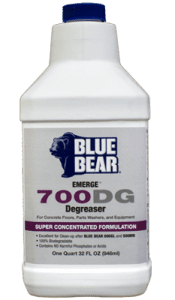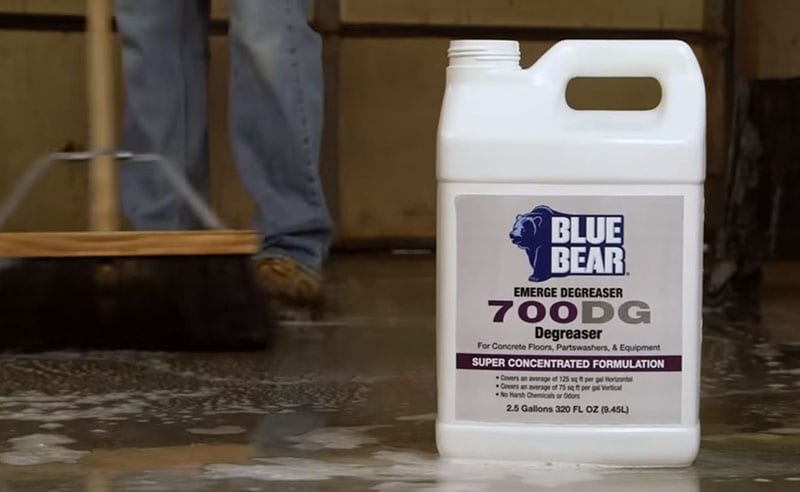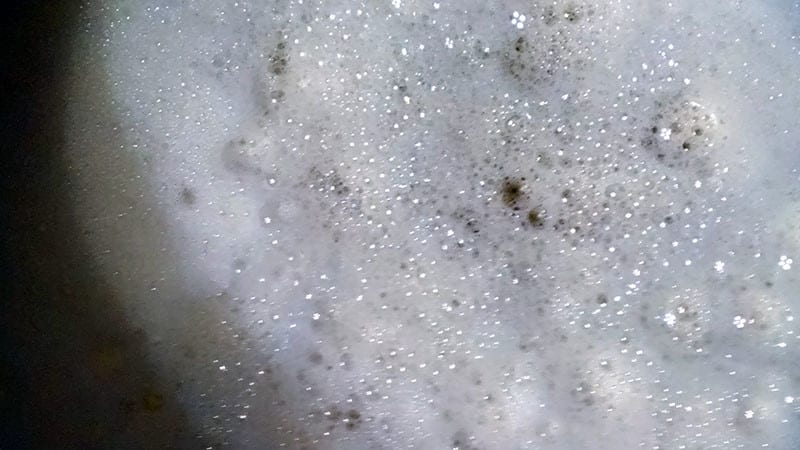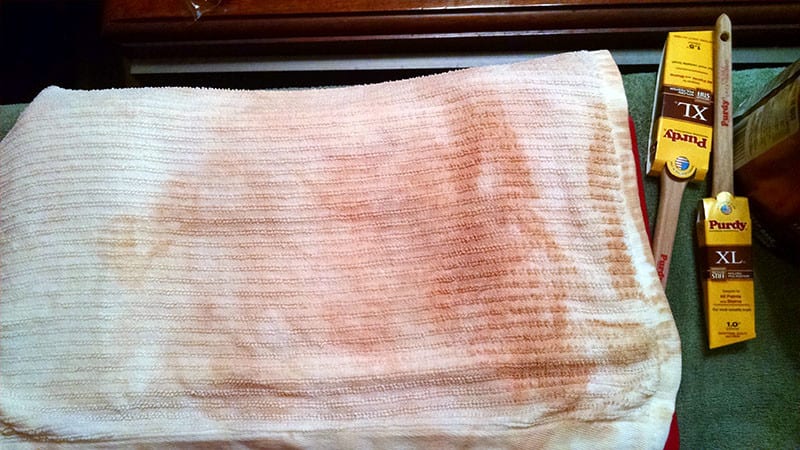Blue Bear 700DG Degreaser Review: Paint Preparation
As with most things in life, proper preparation increases the chance of success. Painting is one task that involves a lot of preparation before enjoying the new color and clean lines. Most homes are drywall construction so prep work and time are generally reduced compared to old pig hair plaster and lathe walls like mine.
Plaster was the dominant wall material until the 1950’s when drywall began to offer numerous benefits for quick construction. While plaster provides better soundproofing and is often combined with fire retardants, it is highly susceptible to cracking due to a number of conditions. Settling tops the list as the most common cause.
Paint Prep Tradition: Trisodium Phosphate
To get started with plaster painting, an application of a quick setting joint compound while feathering the edge is the first step. Once dry, another coat is applied to even out the surface followed by light sanding. The area is cleaned off with a damp sponge, then dried to remove any leftover plaster residue or dust.
To clean the walls and remove any compound dust before painting, I have always used TSP – trisodium phosphate. Since I got a D- in chemistry, here’s what Kenny Koehler has to say about it (chemistry was a focus of his in college).
“Trisodium Phosphate (TSP) is a very common compound in cleaning agents. Most notably, we see it in paint prep cleaner, some soaps, and even as a food additive (you might want to start reading those nutritional labels more carefully). Chemically, it’s a pretty strong base. It has a pH of 12 (1% TSP solution), which is still in the range of harsh bar soaps. In fact, it can pretty effectively break up grease. If you really dig down to its chemical roots, TSP is certainly a compelling paint prep cleaner. While there are some downsides, most sources agree that TSP substitutes (such as sodium carbonate) are generally not as effective.”
Kenny Koehler, Pro Tool Reviews
The Downside of TSP
Let’s address the last line first – “substitutes are generally not as effective.” This is attributed to Peter Hotton, a former handyman columnist who contributed to “The Boston Globe.” While TSP is effective, it is not without its drawbacks. The biggest complaint is what I call the “burn factor.” According to the MSDS (Material Safety Data Sheet) for one TSP manufacturer:
- Skin Contact / Absorption: May cause moderate skin burns. May cause severe irritation, especially if skin is moist or wet.
- Eye Contact: May cause eye burns. May cause permanent corneal injury. May cause severe eye irritation.
- Ingestion: May cause burns of the mouth, throat and stomach. Aspiration in to the lungs may occur during ingestion or vomiting, resulting in lung injury.
- Exposure Limits: Not available
Since the crystals need to be diluted with water, the chances of using them while wet are greatly increased. And, yes, it does cause irritation which is why I wear gloves and long-sleeved shirts when working with it. Also, it can damage wooden areas such as crown molding or baseboards. When in use before painting, there isn’t much worry about the colors being worn off. However, if there are adjoining areas that won’t be painted it is best to put down masking tape to prevent damage.

The Contender: Blue Bear 700DG Degreaser
For my most recent painting project, I had a good amount of patchwork to do and wanted to make sure that the surface was clear of any particles that would blemish the finish. I opted for a new product, a cleaner and degreaser concentrate from Franmar – Blue Bear 700DG Degreaser (formerly known as EMERGE). They also offer a ready-to-use option.
Similar to TSP, the Blue Bear 700DG solution needed to be diluted with water. This is where almost all of the similarities ended. Blue Bear’s Degreaser is a liquid whose active ingredients include sodium metasilicate and surfactant blends. Kenny notes that he wouldn’t eat any food that included these compounds either.
All About Surfactants
Surfactants are important for cleaning effectiveness and can be found in many common detergents, fabric softeners, shampoos, and even laxatives. I guess you could say they really clean everything out. Enough of the bad jokes… maybe.
Sodium metasilicate is used as a building block for the surfactants by enhancing or maintaining the cleaning efficiency of a surfactant. Also, it may be used as part of a component in a chemical degreaser, where it would react with fatty acids (animal grease) to form a soap, which is then rinsed away.
Blue Bear designed their cleaner and degreaser specifically for cleaning up soy residues that come from using other Blue Bear products. Blue Bear is known for its soy-based products that are more environmentally friendly. Kenny is now off on a rant about soy food products. I’ll spare you the details. That being said, Blue Bear 700DG Degreaser also works great as a general-purpose cleaner and degreaser.
Blue Bear 700DG Degreaser is 100% biodegradable and is made up of less than 0.5% VOCs (volatile organic compounds – not nice). It does seem to be more family and earth-friendly.
How to Use Blue Bear 700DG Degreaser for Paint Prep
Once properly mixed, I applied the first “coat” with a towel. It quickly dried – maybe a little slower than TSP, but I didn’t time it. Once all the walls were wiped down, I started at the bottom and worked my way up to avoid streaking and drips. A warm water rinse is needed to remove any remaining residue. As you can see, it bubbles up like soapy water.
Here is the towel I used for the rinse and you can see that some of the paint was removed in the process. Despite my best efforts with 180 grit sandpaper and dust collection, there was still a need to clean before putting a fresh coat of paint on.
Blue Bear 700DG Degreaser isn’t nearly as harsh as TSP. You can skip out on the long sleeve shirts and gloves. While your eyes should be fine, I’d still recommend wearing safety glasses just in case. I wanted to feel the difference without all that stuff and there wasn’t the slightest agitation.
With 115-year-old baseboards, I did a test on some scrap I had in reserve to see if I should tape them off before applying. After wiping down a 3” run, I didn’t see any change. One less step – that’s a bonus!
Overall, I was impressed with the results and would recommend Blue Bear 700DG Degreaser to anyone who wants to save time and reduce risk while getting the same benefits of TSP.
Blue Bear 700DG Degreaser prices on Amazon:




